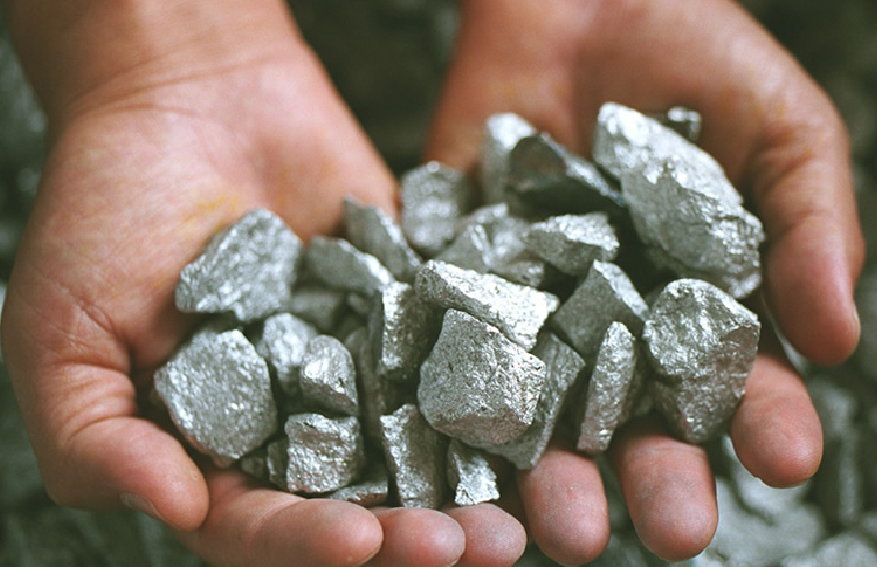Highly valuable rare earth element found within newly discovered ore – Niobobaotite
Researchers made a groundbreaking discovery: a unique ore that may redefine the global dynamics of the rare earth element market.

[Oct. 12, 2023: Staff Writer, The Brighter Side of News]
The density of niobium is only slightly greater than that of steel and considerably less than that of other refractory metals with higher melting points. Because of this, and the high-temperature strength and favorable nuclear properties, there has been extensive development of niobium base alloys for airborne nuclear reactors. (CREDIT: Creative Commons)
In a significant scientific advancement, researchers in China have made a groundbreaking discovery: a unique ore that may redefine the global dynamics of the rare earth element market.
The novel ore, referred to as niobobaotite, has brought the element niobium—a superconductor and highly sought-after component—into the spotlight.
The Composition and Significance of Niobobaotite
Niobobaotite comprises an intriguing blend of niobium, barium, titanium, iron, and chloride. What has primarily captured the scientific community's attention is niobium, a light-gray metal with remarkable characteristics.
Currently, niobium predominantly fortifies the production of steel. Not only does it enhance steel's resilience, but it also achieves this without significantly impacting its weight—an invaluable property in numerous applications.
Related Stories
Beyond steel, niobium's diverse utility extends to the creation of various alloys, which are essentially combinations of different metals.
The Royal Society of Chemistry notes that due to its capability to act as a superconductor at notably low temperatures, niobium is integrated into particle accelerators and other avant-garde scientific machinery.
Discovery Details and the Wider Context
This recent revelation came to light in the Bayan Obo ore deposit, situated in the city of Baotou, Inner Mongolia. Adding to the region's rich mineral tapestry, the brownish-black niobobaotite represents the 17th new type of ore detected in this deposit. Moreover, it is also one amongst an impressive 150 new minerals identified in the area, as informed by the China National Nuclear Corporation (CNNC).
Niobium is a rare earth metal that is used mostly in the steel industry, but it has valuable superconducting properties and could transform battery efficiency, experts say. (CREDIT: Shutterstock Images)
However, the broader implications of this discovery cannot be overstated. For context, at present, China imports a staggering 95% of its niobium. This newly found reserve has the potential to significantly alter China's dependence on niobium imports.
"Depending on the volume and quality of this niobium it could make China self-sufficient," remarked Antonio H. Castro Neto, a distinguished professor of electrical and computer engineering at the National University of Singapore (NUS).
This recent revelation came to light in the Bayan Obo ore deposit, situated in the city of Baotou, Inner Mongolia. (CREDIT: Creative Commons)
On the global front, Brazil currently stands as the foremost supplier of this rare earth metal, followed by Canada. The U.S. Geological Survey has provided insights into a burgeoning project in southern Nebraska—the Elk Creek Critical Minerals Project. This venture is slated to establish the sole niobium mine and processing facility in the U.S., adding a new dimension to global niobium production.
Future Applications and Potential
The discovery of niobobaotite doesn't merely cater to the present but also holds promise for future technological innovations. Researchers worldwide are venturing into the realms of niobium-lithium and niobium-graphene batteries. As analyzed by S&P Global, these next-generation batteries offer substantial benefits over their contemporaries.
The U.S. Geological Survey has provided insights into a burgeoning project in southern Nebraska—the Elk Creek Critical Minerals Project. (CREDIT: Creative Commons)
For starters, when paired with lithium, these batteries mitigate fire risks. The charging capabilities of niobium-lithium batteries also outstrip traditional lithium batteries, allowing for quicker charges and more frequent recharging cycles.
Additionally, the Centre for Advanced 2D Materials (CA2DM) at NUS, leading the charge in niobium-graphene battery research, unveiled promising findings. According to their research, these batteries can outlive lithium-ion batteries by a factor of 10, boasting a lifespan of around 30 years. Furthermore, they possess the capability to achieve a full charge in a mere fraction of the time—less than 10 minutes.
The charging capabilities of niobium-lithium batteries also outstrip traditional lithium batteries. (CREDIT: Creative Commons)
The uncovering of niobobaotite has undoubtedly placed China in a pivotal position in the rare earth element sphere. As nations worldwide grapple with the challenges and opportunities presented by these elements, breakthroughs such as these underscore the importance of continued exploration and research.
For those keen to delve deeper into the nuances of rare earth elements and understand why they are indeed so "rare," refer to our related article: "Why are rare earth elements so rare?".
Note: Materials provided above by The Brighter Side of News. Content may be edited for style and length.
Like these kind of feel good stories? Get the Brighter Side of News' newsletter.
Joseph Shavit
Head Science News Writer | Communicating Innovation & Discovery
Based in Los Angeles, Joseph Shavit is an accomplished science journalist, head science news writer and co-founder at The Brighter Side of News, where he translates cutting-edge discoveries into compelling stories for a broad audience. With a strong background spanning science, business, product management, media leadership, and entrepreneurship, Joseph brings a unique perspective to science communication. His expertise allows him to uncover the intersection of technological advancements and market potential, shedding light on how groundbreaking research evolves into transformative products and industries.



